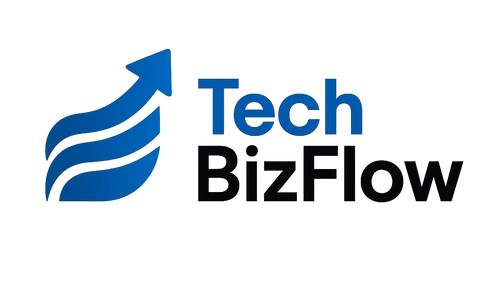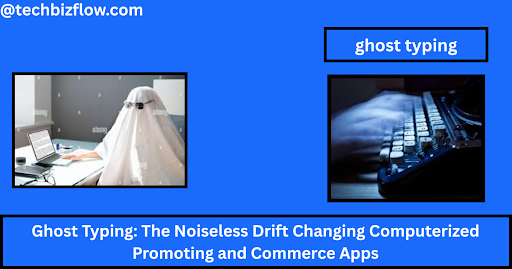Introduction: The Calm Transformation of Ghost Typing
In the quickly advancing world, certain patterns discreetly move the scene while drawing small attention—until their effect becomes outlandish to disregard. One such quiet disruptor is ghost typing.
To begin with, look, the term might inspire ghostly pictures or undercover tech, but in reality, apparition writing is a down-to-earth, transformative drift unpretentiously reshaping advanced showcasing, trade apps, and indeed client benefit. Whether you’ve taken note of it or not, chances are you’ve connected with phantom writing today, probably numerous times.
This article investigates phantom writing in profundity: what it is, why it things, how it’s being utilized in computerized promoting and trade applications, and what the future holds for this noiseless but capable trend.
What Is Phantom Typing?
Ghost writing alludes to the real-time or prescient input of content in computerized communication systems—often, some time recently, a client sends a message. In its most common shape, you’ve likely seen apparition writing when you get a “typing…” marker in a chat window. But that’s fair on the surface.
More modern shapes include:
- AI-generated prescient content (like Gmail’s Keen Compose)
- CRM-integrated chat colleagues that prefill reactions for agents
- Customer behavior investigation apparatuses that expect a question some time recently it’s typed
- Text reflecting in collaborative stages for moment feedback
In quintessence, phantom writing is any behind-the-scenes component where written or expected content upgrades communication without being unmistakable. It’s a merging of client encounter plan, AI, behavioral science, and communication technology.
How It Got Here: The Advancement of Phantom Typing
The rise of phantom writing didn’t happen overnight. Its roots extend back to the most punctual days of moment informing, where markers like “John is typing…” made a difference to make advanced intuitive feel more human.
Fast forward to the present day, and machine learning and natural language processing (NLP) have taken this straightforward concept and increased its potential. By analyzing past inputs, client behavior, and relevant information, cutting-edge frameworks can presently produce, reflect, and prefill content in a way that saves time and upgrades clarity.
Here’s how it evolved:
| Year | Milestone | Description |
| 1996 | ICQ launches | Introduced the first mainstream typing indicators |
| 2005 | Live chat support | Businesses started embedding typing cues in customer support |
| 2010 | Predictive text | Smartphones introduced basic text prediction |
| 2018 | Smart Compose | Google’s AI began completing email sentences |
| 2022–present | AI Chatbots + CRM | Ghost typing becomes integral in digital marketing workflows |
Ghost writing is necessary in advanced showcasing workflows
Why Apparition Writing Things Today
In a world ruled by speed and pertinence, apparition writing fits impeccably. Customers anticipate real-time reactions, indeed, when connecting with bots. Marketers need computerization that doesn’t feel mechanical. Businesses need consistent communication instruments that promote efficiency without requiring more staff.
Ghost writing hits the sweet spot between mechanization and human touch.
1. Spare Time Without Cutting Corners
Typing markers and prefilled proposals permit clients (and operators) to react more quickly while keeping up tone and personalization. This is significant in high-volume client back or deals chat pipes, where indeed a few seconds per discussion can translate into thousands of spared hours monthly.
2. Makes strides Transformation Through Engagement
When a client sees a “typing…” activity or gets a quick, significant reaction, it intuitively increases belief. It signals movement, consideration, and responsiveness—three characteristics that drive change in computerized environments.
3. Empowers More Brilliant AI Assistants
Ghost writing is the undetectable spine of numerous AI chatbots, controlling prescient answers and shaping client behavior. In commerce apps, it’s unobtrusively controlling highlights like:
- Email auto-replies custom-made to the client’s mood
- Live collaboration alters in group software
- CRM messages that adjust as clients type
4. Bridges the Crevice Between Human and Machine Communication
One of the hardest challenges in mechanization is tone precision. Apparition writing permits frameworks to mix human-like behavior with machine efficiency, offering real-time input without sounding constrained or out of place.
Applications in Computerized Marketing
Nowhere is the importance of writing more important than in advanced showcasing. As marketers fight for consideration over numerous stages, each micro-interaction is checked. Apparition writing has gotten to be an instrument for:
1. Chatbots That “Feel” Alive
A chatbot that appears it’s typing—even if it’s fair for a second—adds authenticity. Instead of immediately showing squares of content, phantom writing mirrors the cadence of human discussion. It gives clients time to examine, reflect, and lock in, expanding the probability of continued interaction.
Example: A travel website’s chatbot might utilize phantom writing to mimic a genuine specialist looking up available flights. Indeed, if the reply is pre-programmed, the writing delay includes authenticity.
2. Cleverly Lead Nurturing
Modern CRMs with AI capabilities presently utilize apparition writing to help marketing groups with:
- Drafting outreach emails based on past interactions
- Suggesting message changes for tone and clarity
- Highlighting the best time to send a follow-up
It’s no longer fair, almost what you say, but how you convey it—and apparition writing makes a difference, makes that experience.
3. Real-Time Client Travel Feedback
Marketers utilize behavior-based phantom writing apparatuses to distinguish when a client is around to exit a page or abandon a cart. Some time recently, the client clicks absent, a message begins writing: “Hey, taken note you might have a question…”
This unpretentious approach regularly outflanks pop-ups or non-specific CTAs.
How Trade Apps Are Coordinating Phantom Typing
Beyond showcasing, trade apps have received attention for writing in more useful ways.
1. Inside Communication Tools
Slack, Microsoft Groups, and comparable instruments have extended on essential writing markers. Presently, live-text reflecting and apparition drafting help:
- Managers see what representatives are drafting
- Team members collaborate on live messages
- Editors change mail drafts some time recently they’re sent
This advances speedier input circles and decreases back-and-forth miscommunication.
2. Report Collaboration
Apps like Google Docs and Idea utilize phantom writing to permit real-time collaboration. You can see what your associate is writing some time recently, they hit enter or space. This makes a difference groups brainstorm more effectively, maintain a strategic distance from copying work, and construct momentum.
3. Deals Enablement Platforms
Salesforce, HubSpot, and comparable stages presently utilize ghostwriting in:
- Chat transcripts where directors can screen live conversations
- Suggested reaction libraries based on client tone
- Automated ghostwriting apparatuses for personalized follow-ups
These arms deal groups with superior devices, in real-time, without overpowering them.
The Mental Edge of Apparition Typing

Why does apparition writing work so well? An enormous portion of it comes down to brain research. People are hardwired to translate social cues—even computerized ones.
Here’s what phantom writing taps into:
1. Anticipation
When we see somebody writing, our brain expects communication. This keeps us locked in, prepared to get, and less likely to separate from the app.
2. Seen Empathy
Typing pointers and keenly postponed answers propose exertion and care. Clients translate this as empathy, even if it’s fair code.
3. Human Rhythm
Unlike moment bot answers, apparition writing presents common delays. This mirrors genuine discussion rhythms, which increases client belief and enthusiastic comfort.
Ghost Writing and the iPhone 13 Ruddy: A Design-Driven Example
Take Apple’s iPhone 13 Red—a phone known not for its striking design but for its focus on consistent UX and responsive interaction.
While phantom writing isn’t branded as an include, it unpretentiously integrates into iMessage, Mail, and Siri. Here’s how:
- iMessage: Writing bubbles offer assistance to clients to time their reactions and feel the stream of conversation.
- Mail App: Prescient apparition writing in the shape of recommended answers and subject lines.
- Siri Correspondence: Appears content as it’s being deciphered, permitting on-the-go alterations in real-time.
Apple doesn’t call it apparition writing, but it’s an idealized illustration of how undetectable UX highlights improve client satisfaction without yelling for attention.
Future Patterns: Where Is Phantom Writing Headed?
Ghost writing is advancing past basic content expectations or chat markers. Here’s what’s on the horizon:
1. Sincerely Versatile Typing
Future frameworks may not be fair based on language structure or setting, but on enthusiastic signals. For example, if a client is disappointed, the ghost-drafted reaction may mellow tone.
2. Multilingual Phantom Typing
Global companies are contributing in phantom writing apparatuses that work across languages, advertising moment interpretations that protect nuance, not fair words.
3. Undetectable Collaborators for Professionals
Writers, legal counselors, specialists, and specialists may soon have always-on colleagues that apparition draft reactions, inquire about points, and arrange content as they type—without requiring to be prompted.
4. Moral and Security Challenges
As phantom writing becomes more capable, the lines between offering assistance and control obscure. Businesses will need to navigate:
- Transparency (do clients know a ghostwriter is involved?)
- Consent (is writing being observed without permission?)
- Authenticity (at what point does AI take over as well much?)
Tips for Coordination Apparition Writing in Your Business
If you’re considering leveraging phantom writing in your computerized methodology, here are a few commonsense guidelines:
Begin With Customer-Facing Chat
Begin where phantom writing has the most effect: client chats. Include “typing…” delays for authenticity and utilize AI-generated proposals to offer assistance to specialists to answer faster.
Prepare Your AI With Genuine Conversations
Avoid non-specific proposals. Nourish your AI with genuine client information and discussion history for more important, relevant responses.
Utilize in Deals Pipes With Care
In deals, timing is everything. Utilize phantom writing to propose answers or pushes based on client behavior, but maintain a strategic distance from being intrusive.
Screen for Predisposition and Tone
Ghost writing devices must be reviewed frequently to guarantee they reflect your brand voice and maintain a strategic distance from hostile or one-sided language.
Conclusion: The Control of What You Don’t See
Ghost typing is one of those uncommon patterns that’s imperceptible, however transformative. It improves interaction, quickens workflows, and brings a human feel to machine forms. In advanced showcasing and trade applications, it’s getting to be not fair a competitive edge, but a necessity.
As AI proceeds to advance and desires rise, businesses must discover modern ways to communicate more quickly, more brilliantly, and more actually. Apparition writing shines on all three, without ever requiring the spotlight.
So the following time you see a flickering “…” in your chat window, keep in mind: there’s a noiseless insurgency unfurling right some time recently of your eyes.
FAQs
Q1: What is phantom typing?
Phantom writing is the real-time recreation or expectation of written content, frequently utilized in chats, emails, and commerce apps.
Q2: How does apparition writing advantage computerized marketing?
It improves client engagement and transformation by reenacting human-like reactions and making strides in reaction speed.
Q3: Is apparition writing fueled by AI?
Yes, most advanced phantom writing highlights utilize AI and machine learning to foresee or create pertinent text.
Q4: Can app-based writing be customized for my brand’s tone?
Absolutely—AI-driven content writing apparatuses can be prepared to coordinate your brand’s voice and communication style.


